Our look at the aging tendencies of the various positions for dynasty fantasy football has reached the tight end position. More than any other spot, tight end has maybe the strongest aging-related narrative: Tight ends develop slowly.
Obviously, no narrative applies 100% of the time, but we know that in general, it takes time for a rookie tight end to become fantasy-relevant. And thanks to the long recent careers of tight ends like Tony Gonzalez, Antonio Gates, Jason Witten, and now Jason Witten again, those careers can last a long time.
We’ve looked at quarterback, running back, and wide receiver ages in recent days. Now, we cap it off with tight end.
All ages are the player’s age as of Dec. 31 of the given season.)
Age range
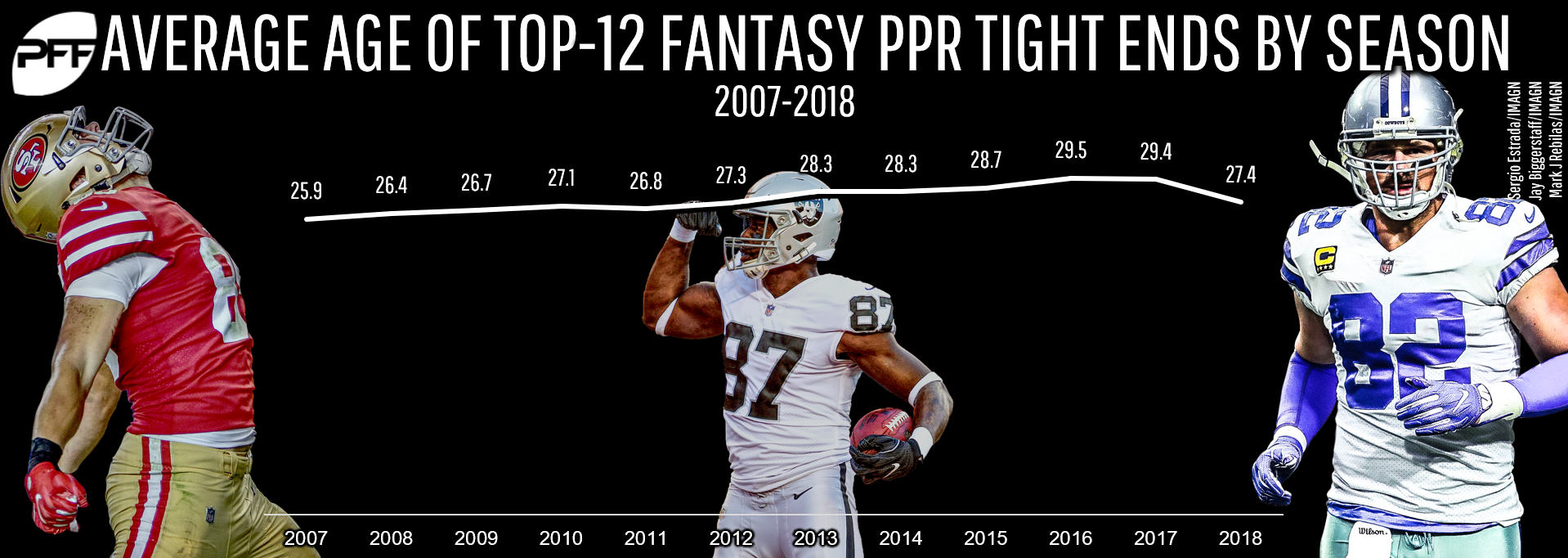
Backing up our narrative, the top-12 tight ends’ average age of 27.7 years is about a year older than the top-24 receivers (26.8) and a full two years older than running backs (25.7). Quarterbacks (29.9) has the oldest average age of its peak performers, owing in large part to the long shelf life of a top quarterback, but as far as the receiving positions, tight end stands as the oldest.
Last offseason, with the retirements of Witten and Martellus Bennett and Julius Thomas and other tight ends struggling to find work, our Tyler Loechner did a study on the changing of the guard at the position, as the older names moved on. And with Delanie Walker and Greg Olsen suffering through injuries in 2018, that continued, evidenced by the number of first-time top-12 tight ends last year.
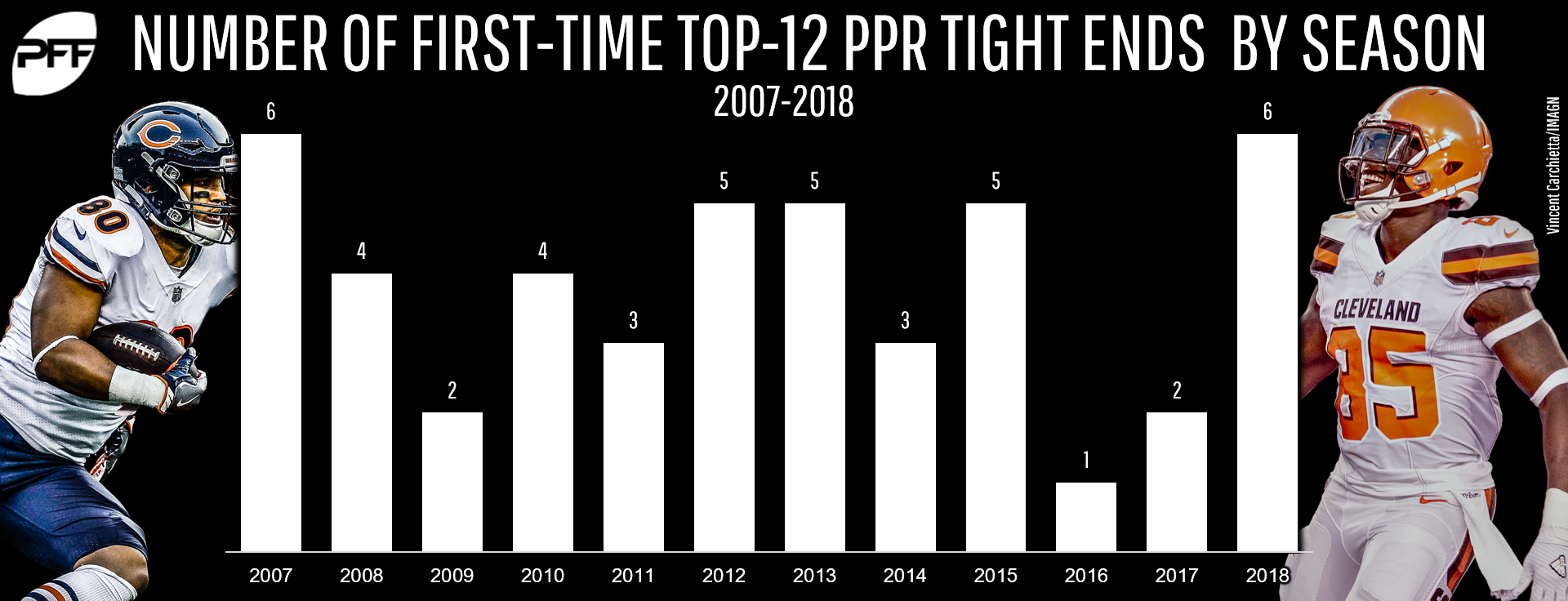
A year ago, our roster of top-12 tight ends was growing stagnant. There was some year-over-year change, but not that much. Last year, though, half of the list were new entrants to the upper tier, and that’s before considering O.J. Howard or 2018 rookies Dallas Goedert, Mark Andrews, and Chris Herndon, or others.
So now we know the average age of the top-12 tight ends, and we know the number of first-timers. But perhaps more helpful is the full age breakdown. What ages produce top-12 fantasy tight ends the most often?
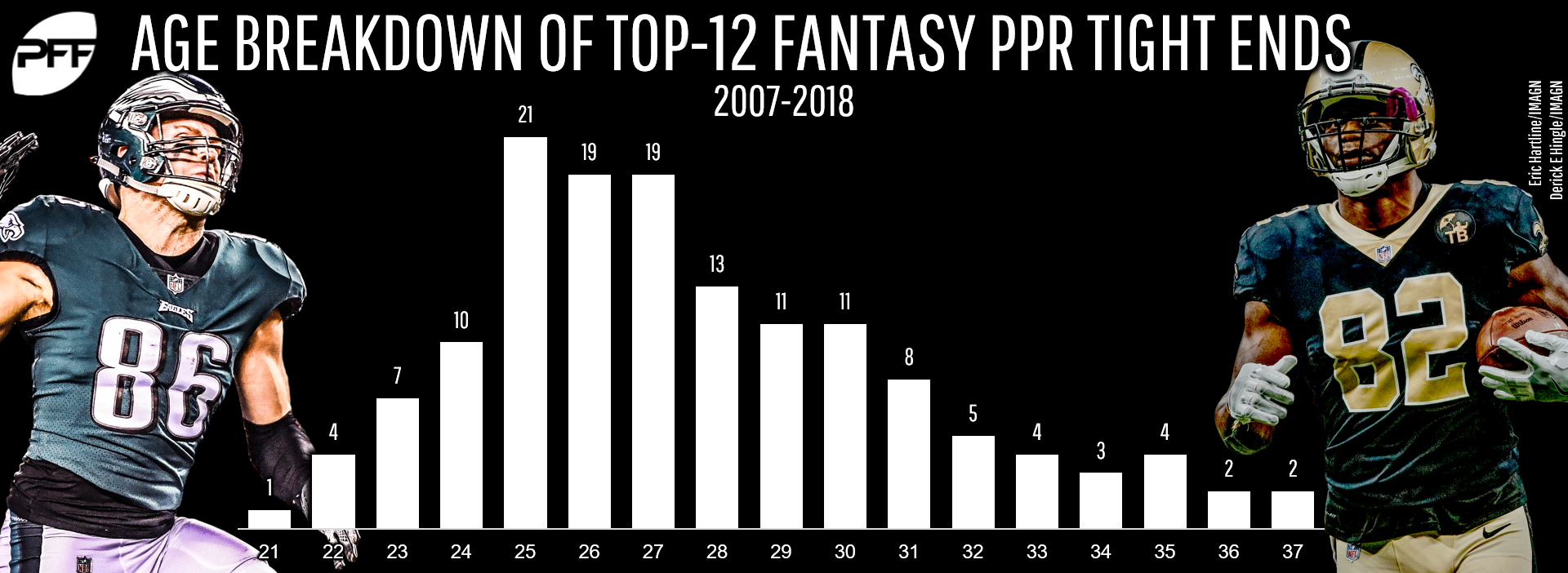
All the positions put up a quasi-bell curve in this study. Unsurprisingly, as we generally know that’s how athletic ability works. But tight end sees the biggest and fastest early spike, with very few tight ends putting up top-12 seasons until they are 24, and then suddenly 24-year-olds being dominant. It tapers off far more gradually, but it seems clear from this that 25 years old is the sweet spot at the position.
When do they first develop?

Defending our last point, as many tight ends reached the top-12 for the first time at age 25 in the last 12 years as at all ages before 25 combined, and almost as many as reach is after 25 combined as well. That means that, out of 46 tight ends to have put up their first top-12 seasons since 2007, almost exactly one-third (32.6%) did so at age 25.
Perhaps even more tellingly, 65% of tight ends who ever put up a top-12 season did so by 25, and a full 89% did so by the time they were 27. Tight ends develop late, but they don’t develop that late.
The five tight ends who put up their first top-12 season after age 27:
- Dallas Clark (TE6) in 2007 at age 28;
- Visanthe Shiancoe (TE8) in 2008 at age 28;
- Vance McDonald (TE10) in 2018 at age 28;
- Delanie Walker (TE11) in 2013 at age 29;
- Gary Barnidge (TE4) in 2015 at age 30
There’s no obvious story to take away from those names. Walker spent years behind Vernon Davis in San Francisco, then came into his own when he joined the Titans. Clark was one of the league’s top tight ends from 2007 to 2009, with only a so-so career around those years. Barnidge had puttered around the league for the better part of a decade before his monster 2015, then only played one more season. Shiancoe had a short run as a premier performer. And McDonald just had his first top-12 season, but if he can stay healthy in an offense that just lost Antonio Brown, there’s reason to believe it could continue.
Staying power
At each position so far, I’ve looked at how repeatable being a top performer is — that is, based on the age at which a player first reaches the upper tier, I look at the frequency at which they continue to put up top seasons. And I’m doing it here as well. But a note of caution before I show the data: It’s not very helpful. The most successful ages (21 and 29) are that successful because each has a one-player sample size of, respectively, Rob Gronkowski and Delanie Walker. You can look at this and marvel at the up-and-down nature, but I’m not sure it’s actually productive.
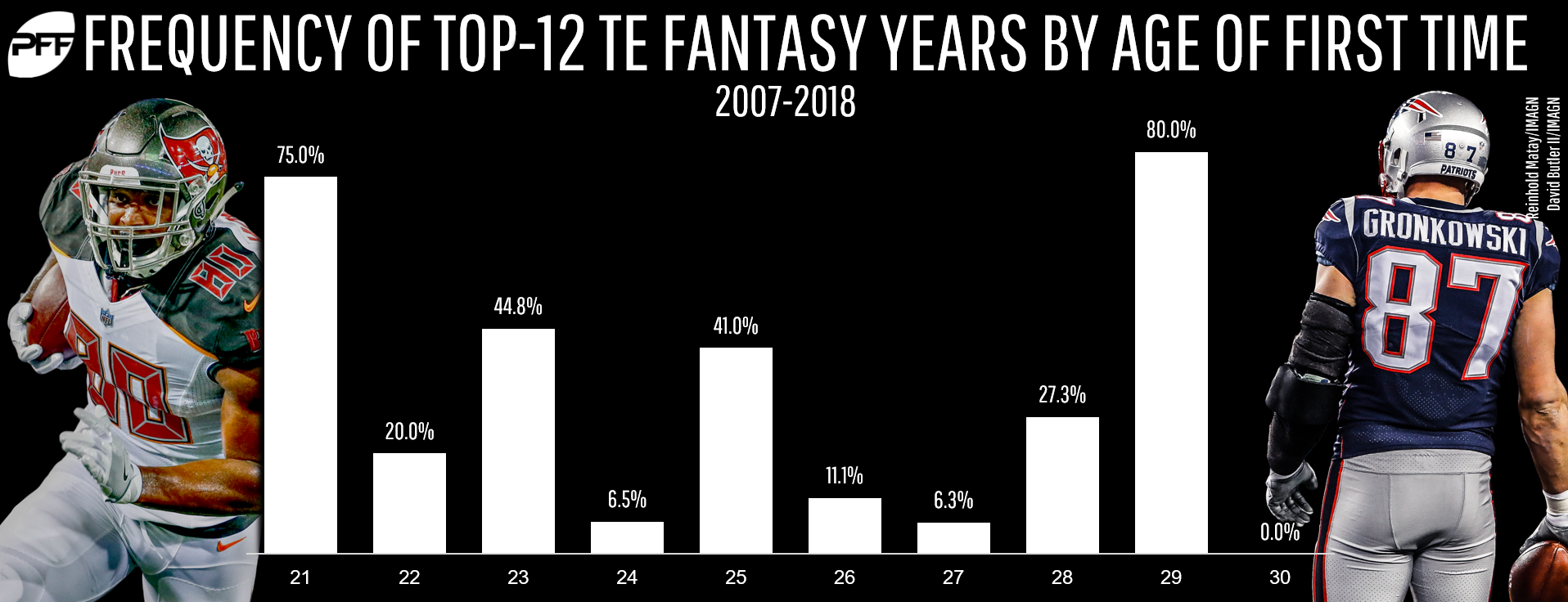
See? If you can glean anything actionable from that, let me know.
The next thing I’ve looked at as I’ve gone through this process is expanding that last bit of research to include all players instead of just first-timers. Is there an age at which players’ successes become less repeatable?
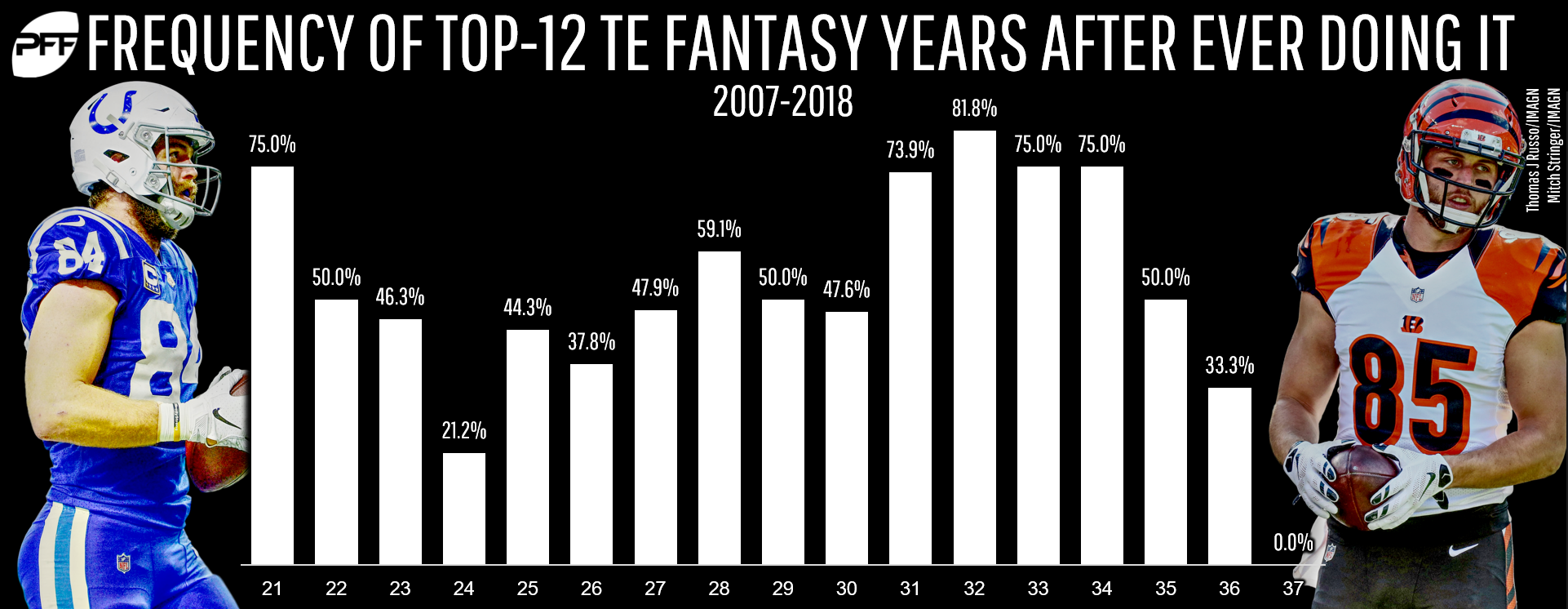
End result: Not really, actually. In the mid-20s, players don’t repeat quite as often as Gronkowski at age 21 or the older tight ends, but that’s largely attributable to the fact that the population is so much greater.
The main takeaway here is that, if a tight end is productive for more than a few years, there’s no real reason to expect the cliff until a relatively old age. Even the tight ends who put up top-12 seasons in their early 30s are repeating at a three-quarters rate. Sure, be careful if your tight end is 35, 36. But if he’s 32? You can often still get three or four good years at least.
Current samples
There were six first-time top-12 tight ends last year. We already mentioned McDonald, for whom the biggest question is health. Other than him, here were last year’s first-timers:
- George Kittle (TE3): Kittle was a massive second-year breakout, and if you assume his quarterback situation gets even better next year, he appears to be one of those locked-in-at-the-top guys.
- Eric Ebron (TE4): Ebron benefited from massive touchdown luck and injury to Jack Doyle, but regardless, 2018 was the culmination of years of promise. Last year might end up being Ebron’s ceiling, but he’s likely to hover in the range of the top-12 going forward.
- Austin Hooper (TE6): The “TE6” label makes Hooper’s season seem slightly better than it was, as it was the worst TE6 season in a decade, but it was nonetheless a good development for Hooper, who is entering the ever-important 25-year-old season in 2019.
- Trey Burton (TE8): Like Walker years ago, Burton came out from behind an established tight end (in his case Zach Ertz) when he joined a new team and rode that to a successful season. Unlike Walker, Burton was only decent last year, not a true breakout. He has high potential still but appears unlikely to have much more ceiling to get to.
- David Njoku (TE9): Njoku joined the league at age 21, so his breakout last year came at age 22. If the Browns offense develops like many expect it to, he has enormous Year 3 potential.
As mentioned above, there are also plenty of tight ends knocking at the door, including Howard, Andrews, Herndon, and Goedert. Considering the aforementioned changing of the guard, it’s a good time to be a young tight end.
Best dynasty picks
Travis Kelce is entering his age-30 season. Gronkowski too. Zach Ertz is 29. Jimmy Graham is 33. Nobody is saying those guys are totally finished (though you could definitely argue that for Gronkowski and Graham), but it’s opened the door for some new names to stake their claim as top performers. I wrote recently about how O.J. Howard (entering his age-25 season) is one of my top picks to be a third-year breakout, while Kittle just had his big age-25 year as well. Kelce and Ertz probably remain the top two dynasty tight ends, but Kittle and Howard are as close to that group as they could reasonably be.
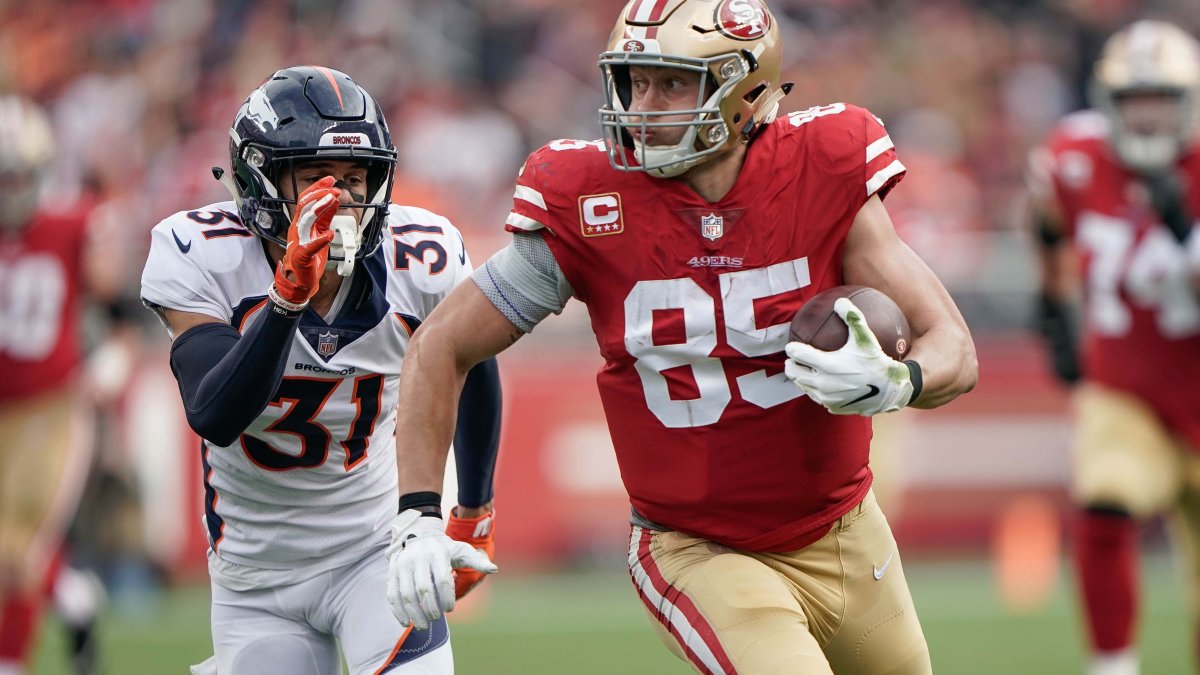


 © 2025 PFF - all rights reserved.
© 2025 PFF - all rights reserved.